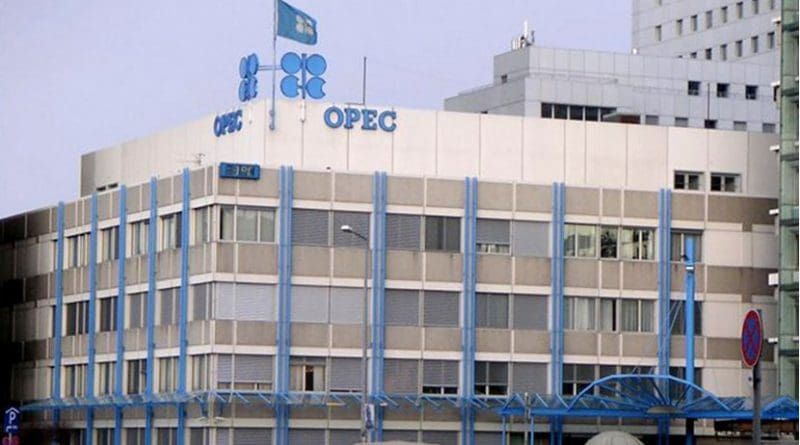OPEC+ Decision On Monday Was All But Given – OpEd
By Arab News
By Michael Rothman*
Members of the Organization of the Petroleum Exporting Countries gathered on Monday via video for its regular monthly review of quotas and an assessment of the global oil balance.
For the former, there has been little concern about members adhering to ceilings with production compliance having stayed north of 100 percent — a phenomenon that we expected, but one that has defied most market watchers. As to the oil balance itself, global oil inventories have fallen sharply and are forecast to contract by a larger-than-seasonal rate in the coming months as our forecast allows for the already agreed-to quota to unwind.
As has been the case for the past several OPEC meetings, there was chatter amongst market watchers about the group relaxing quotas further. Most of this seems to emanate from pundits that have been bearish on crude prices since they passed the $55-per-barrel mark if truth be told. Be that as it may, even with global oil inventories having drawn by about 435 million barrels since July 2020 — the largest in recorded history — our sense is that there were a few too many moving parts in the balance about demand. This raises a legitimate concern in OPEC about pushing more barrels into the system beyond what has already been agreed to.
As yardsticks go, global oil inventories are still above the 2010-2014 average, a metric we sense OPEC is targeting for storage levels. We also feel compelled to reiterate our sense that OPEC wants to err on the side of over-tightening the global oil balance — as opposed to over-supplying the system — which made Monday’s “status quo” about quotas all but given.
There is evident concern being expressed about the rise in oil prices. The Joe Biden administration again made a plea for OPEC to push extra crude into the market to lever down gasoline prices “at the pump.” While that maneuver is aimed at garnering voter support ahead of mid-term elections, we expect OPEC will again respond with a polite “hard pass” as it did a few months ago.
In assessing oil price levels and impacts on the global economy, the previous analysis we have published suggests the oil price level that becomes worrisome is actually close to $130 per barrel. This is the price that pushes expenditures on oil as a percent of gross domestic product north of the 5 percent mark, a level that tends to dampen economic activity.
Regarding close-to-real-time assessments of demand, the latest weekly reading for global air traffic showed a rate that put traffic almost equal to the respective 2019 figure. The number of cargo, commercial, private, and military flights have actually remained steady over the past few months, which is notable given the angst and hype about the fourth wave of the COVID-19 pandemic. The stronger flight activity appears to be coincident with better surface traffic, which would help explain why we have seen diesel-crude oil price spreads rise notably in all key markets. To be fair, we have to wonder if part of the upward pressure in these price spreads stems from possibly stronger diesel demand for generators, which is the result of a number of reported power issues in Europe, South America, and the Far East.
Lastly, we note that energy share prices advanced last week in all financial centers. But the largest advance appears to have been in US exploration and production companies, which rose to their highest mark since the Spring of 2019 as they are up 148 percent since our October 2020 call about energy names.
Despite the recent surge, energy share prices in all four financial hubs (US, Canada, Europe, and Australia) are still below “fair value” based on current oil prices.
• Michael Rothman is the president & founder of Cornerstone Analytics, a US-based consultancy focusing on macro-energy research. He has nearly 40 years of experience covering the global energy markets and has been attending OPEC meetings since 1986. He is also the author of “Cornerstones of Life” which is available on Amazon.com

